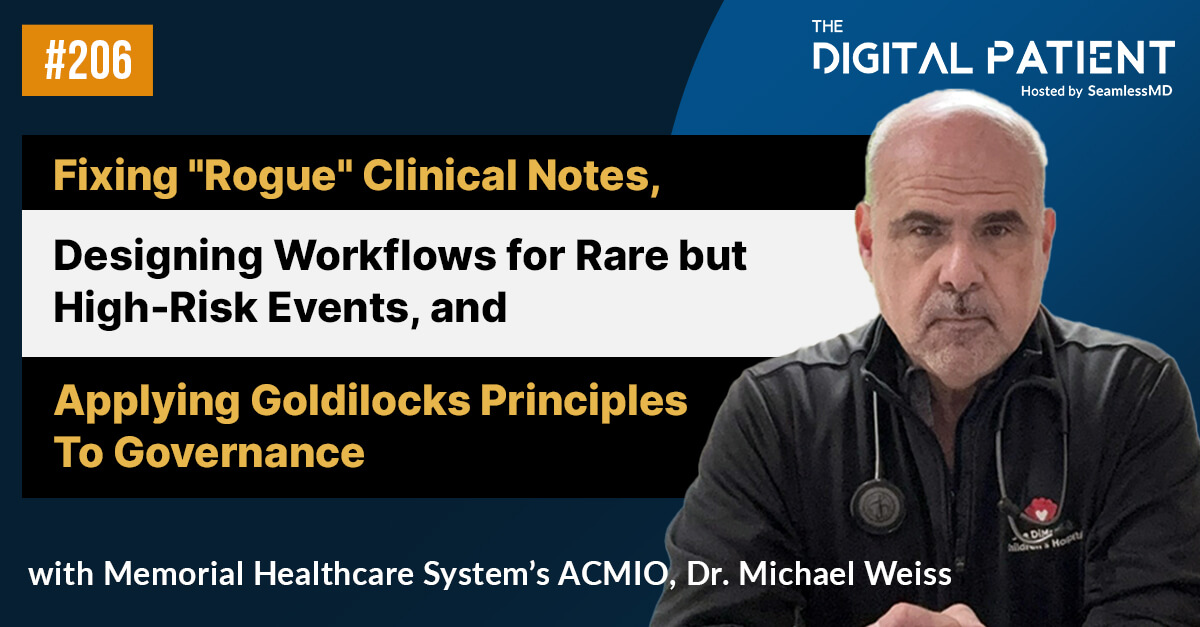At a time when safety, quality, and innovation are more mission-critical than ever before, healthcare organizations are racing to meet the rising consumer demand for increased access to healthcare. As such, healthcare providers are embracing Remote Patient Monitoring solutions in order to allow patients to conveniently manage their own care, while also allowing providers to provide customized care recommendations and intervene faster when necessary. Remote Monitoring truly offers solace with an enhanced patient experience that reduces the total cost of care via fewer cancellations, reduced length of stay, readmissions and ED visits.
“[Surgical remote monitoring] has been critical for our readmissions prevention strategy, allowing our care teams to monitor patients at home and catch complications earlier. Most importantly, patients love the [digital] experience! Patients feel connected to our team every step of the way, even when they are at home,” shared Cheryl Crisafi MSN, RN, CNL Nurse Coordinator, Baystate Heart & Vascular Center, Baystate Health
Similarly, by leveraging an app-based Remote Patient Monitoring solution, University Hospitals reduced readmissions by 49% - a clear indication that remote monitoring is helping leading hospitals revamp their readmissions prevention strategy.
Recently, AVIA Connect published The Top 50 Remote Monitoring Companies Report representing the aggregation and analysis of over 1,000 health system implementation data points and highlights broader industry trends to contextualize the impact the companies and products are currently having in the space.
Given the complexity and evolving nature of remote monitoring, the report helps define the remote monitoring landscape and how these solutions can truly elevate patient care and the patient experience. The report defines the three remote monitoring subcategories as:
- Connected platforms: Remote monitoring solutions most appropriate for organizations looking to support enterprise-wide use cases, backed by a robust set of FDA-approved devices. Connected platforms generally have broader market usage and more potential use cases.
- Non-connected platforms: Remote monitoring solutions that can keep a patient engaged and communicating with you about their care plan, but do not come with proprietary connected devices. Instead, they rely on payer-provided or health system-provisioned devices for data, potentially reducing cost at scale and increasing accessibility for patients without broadband internet.
- Condition-specific platforms: Remote monitoring solutions that primarily focus on one specific condition, offering an industry-leading patient experience with focused devices, in-depth features, and educational content on the condition.
Of the three subcategories, 48% of AVIA Connect’s Top 50 Remote Monitoring companies are connected platforms while the remaining 52% consists of non-connected and condition-specific platforms combined.
As Dr. Joshua Liu, CEO, SeamlessMD highlights in a recent article titled The Next Big Thing in Remote Monitoring Personalized Digital Care Journeys, “meeting the Digital needs for the other 95% of patient care journeys has led to the recent rise of App-based RPM solutions, more commonly known as “Digital Care Journeys”, which can be easily scaled across surgery, oncology, maternity care, and other service lines. This involves health systems engaging patients with personalized digital care journeys via the patient’s own smartphone, tablet, or desktop computer to send surgery or condition-specific reminders, deliver pre- and post-care education and monitor symptoms. Patients can self-monitor via automated workflows (e.g., receive automated guidance on how to manage constipation post-surgery) and providers can get alerts and dashboards to monitor patient progress remotely (e.g., pain, incision photos).”
A study published by SAGE Journals, Journal of Patient Experience, highlights the use of Remote Patient Monitoring technology to reduce the 30-day readmission rate by 66%. The integrated monitoring program called “Home to Stay”, spearheaded by Sinai Health System supports vulnerable patients in their transition from hospital to home.
Effective remote patient monitoring also leads to earlier discharge and the ability to catch complications before it escalates to ED visits or readmissions. Over 30 academic studies have shown SeamlessMD to reduce hospital length of stay by 1-2 days, readmissions by 72%, ER visits by 47% and hospital costs by $1,000-$2,000 per patient.
As a Top 5 Condition-Specific Vendor highlighted in the AVIA Connect Top 50 RM Companies Report, SeamlessMD focuses on creating digital care journeys that provide expert-approved education content for the duration of a patient’s care journey. Patients can access digital care plans on their smartphone, tablet, or computer and are remotely guided through specific journeys such as surgery, oncology, cancer care, chronic care and COVID-19 monitoring.
“SeamlessMD is a program designed to help patients follow their own care from the very beginning to the very end of the whole surgical journey and from a provider standpoint we can monitor patients remotely and instantly," said Daniel Chu, M.D., UAB’s ERAS Medical Director and Vice Chair of Health Services Research lead for the ERP and associate professor in the Department of Surgery.
As a remote monitoring solution, SeamlessMD represents a scalable way for healthcare providers to stay connected with patients throughout their digital care journey, helping to improve clinical outcomes such as reduced ED visits, hospital length of stay and readmissions. SeamlessMD specifically allows healthcare organizations to:
- Engage patients with a virtual companion via a patient’s smartphone, tablet or computer that guides them throughout their digital care journey;
- Deliver evidence-based, condition-specific clinical pathways;
- Monitor patient compliance, symptoms and recovery progress remotely (e.g. temperature, pain levels, incision photos, etc.);Automate self-care guidance via smart algorithms and workflows (e.g. automated education for how to manage low-risk issues or when to escalate to a provider); and
- Receive alerts and monitor dashboards to identify when a patient’s health status changes, enabling providers to intervene sooner (optional, depending on a care team’s resources).
It is clear that the implementation of a Condition-Specific platform, such as SeamlessMD, truly helps to engage, monitor and stay connected with patients for improved clinical outcomes.
.svg)










.png)
